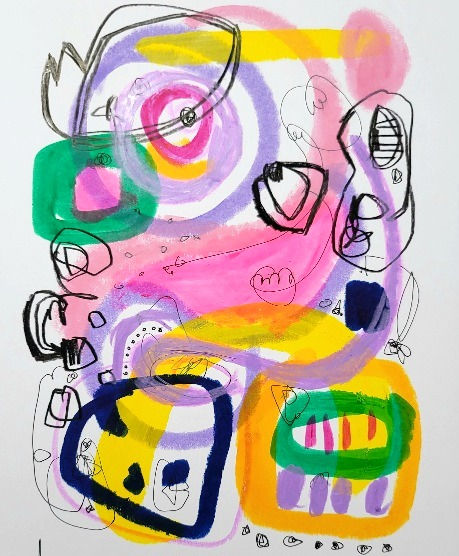Gouache paint sticks are an exciting medium for artists of all skill levels. These solid paints can be used in a variety of ways, from traditional brushwork to experimental mark-making. In this blog post, we'll explore the basics of gouache paint sticks and offer some tips and techniques for using them in your artwork.
First, let's define what gouache paint sticks are. Gouache is a type of water-based paint that is known for its matte finish and high pigment concentration. It is similar to watercolour in that it is transparent and can be thinned with water, but it has a thicker, more opaque consistency when dry. Gouache paint sticks are a convenient form of this medium that allows you to paint directly with the stick, rather than having to mix the paint with water and a brush.
One of the benefits of gouache paint sticks is that they are very portable. You can easily take them with you on the go and use them to create quick studies or finished paintings. They are also a great option for artists who prefer a more immediate, hands-on approach to painting. Instead of having to dip a brush into a palette of paint, you can simply draw with the stick to lay down colour.
Another advantage of gouache paint sticks is that they are highly pigmented and vibrant. Because they are solid and contain a higher concentration of pigment than traditional gouache paints, they produce bold, rich colours that are perfect for creating eye-catching artwork.
So, how do you use gouache paint sticks? The first step is to choose a surface to paint on. Gouache paint sticks can be used on paper, cardboard, or even wood, as long as the surface is relatively smooth and absorbent. If you're using paper, it's a good idea to choose a heavier weight, such as watercolour paper or bristol board. These surfaces are more durable and will hold up better to the paint sticks.
Before you start painting, you'll need to prep your surface. This is especially important if you're working on paper, as it can tend to buckle or wrinkle when wet. One way to prevent this is to stretch your paper by taping it to a flat surface, such as a drawing board. You can also lightly mist the paper with water before you begin painting, as this will help the paint adhere better and reduce the risk of buckling.
Once your surface is ready, it's time to start creating! Gouache paint sticks are very forgiving, so don't be afraid to experiment and have fun. You can use them to draw lines, make marks, or fill in large areas of colour. To activate the paint, simply wet the tip of the stick with water or a wet brush. You can also mix the paint with water on a palette or in a small container to create different values and shades.

If you're using a brush to apply the paint, keep in mind that gouache can dry quickly, so you'll want to work in small sections and keep your brush wet. You can also use a spray bottle to mist your paper as you paint, which will help keep the paint wet and workable for longer.
One of the great things about gouache paint sticks is that they can be used in a variety of techniques. For example, you can use them to create loose, expressive brushstrokes or precise, detailed lines. You can also layer the paint to create rich, textured effects. To layer the paint, simply let the first layer dry completely before adding a second layer on top. You can also mix different colours on the paper to create new hues.
Gouache paint sticks are a versatile medium that can be used in a variety of creative ways.
Here are a few more tips and techniques for using them in your artwork:
Use a dry brush technique to create soft, feathery brushstrokes. Simply wet your brush and then gently blot it on a paper towel before applying it to your paper. This will remove some of the water from the brush, allowing you to create dry brush effects.
Use a palette knife or other flat tool to spread the paint and create texture. This is a great way to add interest to your paintings and create a more three-dimensional look.
Experiment with different brush sizes and shapes to create different effects. For example, you can use a small, round brush to create fine lines and details, or a large, flat brush to lay down broad strokes of colour.
Try using gouache paint sticks in combination with other mediums, such as ink, watercolour, or coloured pencils. This can add depth and interest to your artwork and allow you to create unique effects.
Don't be afraid to make mistakes! Gouache paint sticks are a forgiving medium, and you can always paint over mistakes or cover them with additional layers. This allows you to experiment and try new things without the fear of ruining your artwork.
Overall, gouache paint sticks are a fun and exciting medium for artists of all skill levels. Whether you're just starting out or you're an experienced painter, they offer a wide range of possibilities for creativity and expression. So grab some paint sticks and start exploring the world of gouache today!
Comments